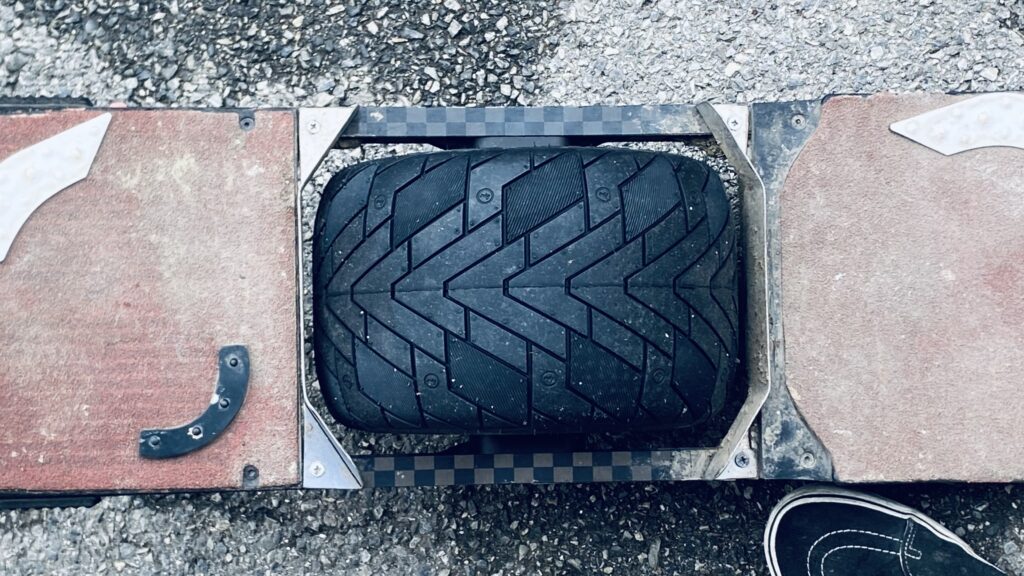When it comes to dialing in the perfect PSI for your Onewheel, opinions vary widely. Although the manufacturer recommends 20 PSI for optimal performance, my personal experience tells a different story—especially when using the Enduro tyre from TFL. In this post, I’ll share why I run my board at 10 PSI for both street and trail riding, and how it delivers that coveted smooth “powderday” feeling even on less-than-perfect surfaces.
Why the Manufacturer Recommends 20 PSI
The recommended 20 PSI isn’t arbitrary. It’s designed to ensure:
- Stability and Responsiveness: A firmer tyre at 20 PSI delivers predictable handling and quick reactions, which is important in challenging terrains.
- Durability: Higher pressure minimizes tyre deformation, reducing wear and the risk of damage.
- Safety: Staying within manufacturer guidelines typically ensures that safety protocols are maintained across various riding conditions.
My Experience with 10 PSI on the Enduro Tyre from TFL
A Smoother, More Enjoyable Ride
After extensive riding, I discovered that lowering the pressure to 10 PSI transforms the riding experience:
- Enhanced Comfort: The softer setup absorbs bumps and imperfections, making for a smooth ride on rough streets and trails alike.
- “Powderday” Feeling: I cherish that relaxed, flowing sensation on my board—akin to riding on fresh powder snow. The extra cushioning provided by 10 PSI gives me that serene glide, even when the roads aren’t perfectly smooth.
- Consistent Performance: I use the same 10 PSI setting whether I’m cruising down urban streets or tackling uneven trails. In my area, the streets aren’t very smooth, so maintaining a lower PSI helps keep my ride both comfortable and predictable.
The Role of the Enduro Tyre from TFL
The Enduro tyre from TFL is engineered for versatility and performance. Its design complements a lower pressure setup by:
- Optimizing Traction: The tyre’s tread and compound work exceptionally well at 10 PSI, offering excellent grip on both urban and off-road surfaces.
- Improved Adaptability: Whether facing potholes or gravel, the Enduro tyre adapts to the terrain, enhancing the overall riding experience.
- Balancing Comfort and Performance: With its construction, the Enduro tyre strikes a balance that makes it suitable for lower pressures without compromising safety or durability.
Weighing the Pros and Cons
Benefits of Running 10 PSI
- Smooth, Cushioned Ride: Lower pressure offers better shock absorption, making rides feel more comfortable and fluid.
- Enhanced Traction on Varied Surfaces: The increased contact patch improves grip, which is beneficial on our rough city streets and trails.
- Signature “Powderday” Sensation: The relaxed, gliding feel at 10 PSI mirrors the smooth ride you might find on powder snow, enhancing the overall enjoyment of each journey.
Potential Trade-Offs
- Reduced Responsiveness: Compared to 20 PSI, a softer tyre might feel less agile, which could be noticeable during aggressive maneuvers.
- Increased Wear: Over time, lower pressure may lead to faster tyre wear, so regular checks and maintenance are essential.
- Safety Considerations: Deviating from manufacturer guidelines always carries some risk. It’s important to monitor tyre performance and adjust PSI if conditions change.
Final Thoughts: What PSI Should You Ride Your Onewheel?
The answer to “What PSI should I ride my Onewheel?” isn’t one-size-fits-all. For me, using the Enduro tyre from TFL and riding on less smooth streets and trails, 10 PSI strikes the perfect balance between comfort and performance. It offers that smooth, “powderday” feeling without compromising the necessary grip and durability needed for everyday riding.
Before you experiment, remember:
- Test Gradually: Try different pressures incrementally to find the best balance for your personal riding style and local conditions.
- Prioritize Safety: Keep a close eye on tyre wear and overall performance. Adjust if you notice any issues.
- Share and Learn: Connect with other Onewheel riders. Their experiences and insights can help guide your own adjustments.
Ultimately, while the manual suggests 20 PSI for many reasons, personalizing your setup to 10 PSI has made a world of difference in my riding experience. Your ideal PSI might be different, so don’t be afraid to experiment and discover what feels right for you.
Happy riding 🤙

